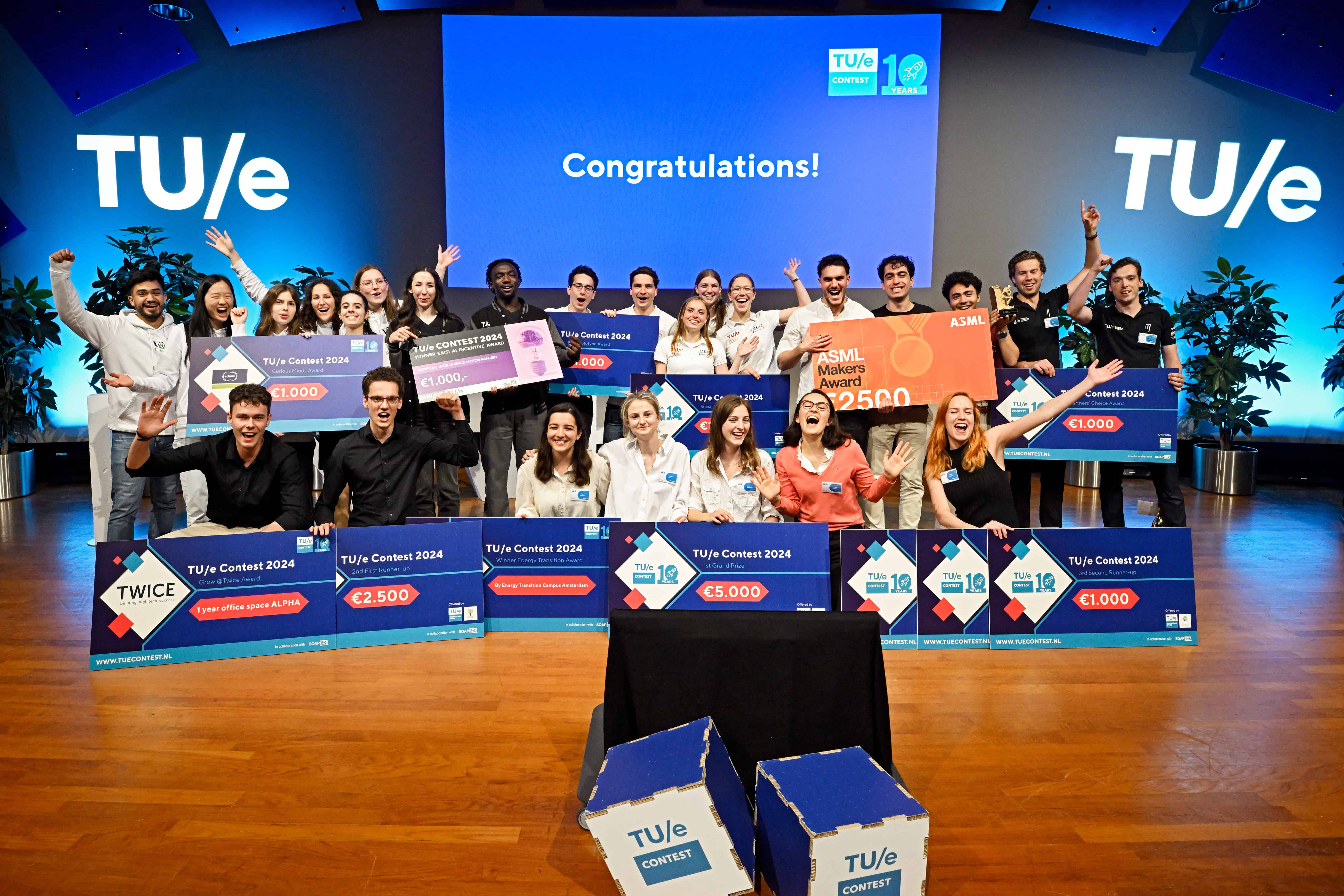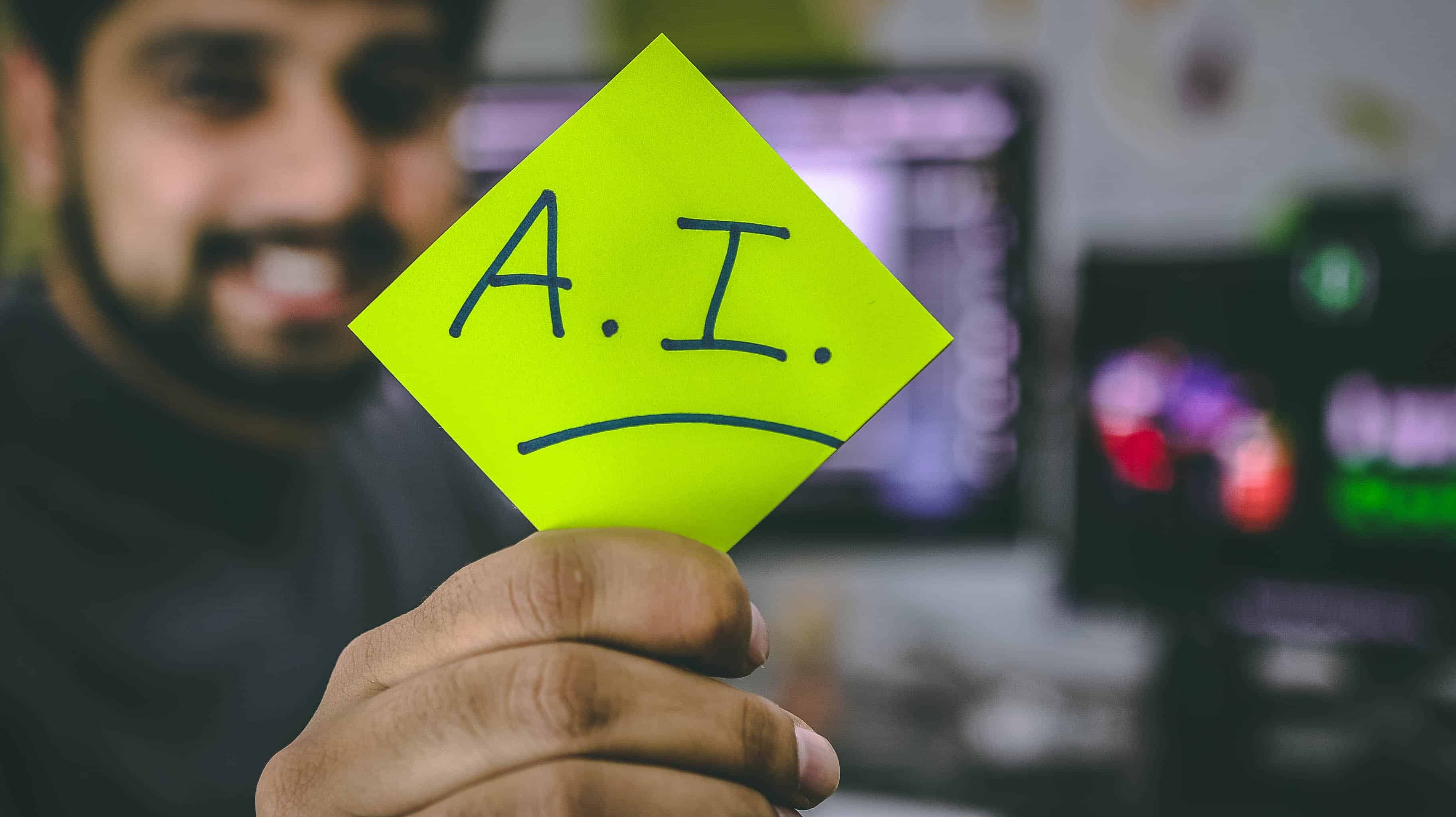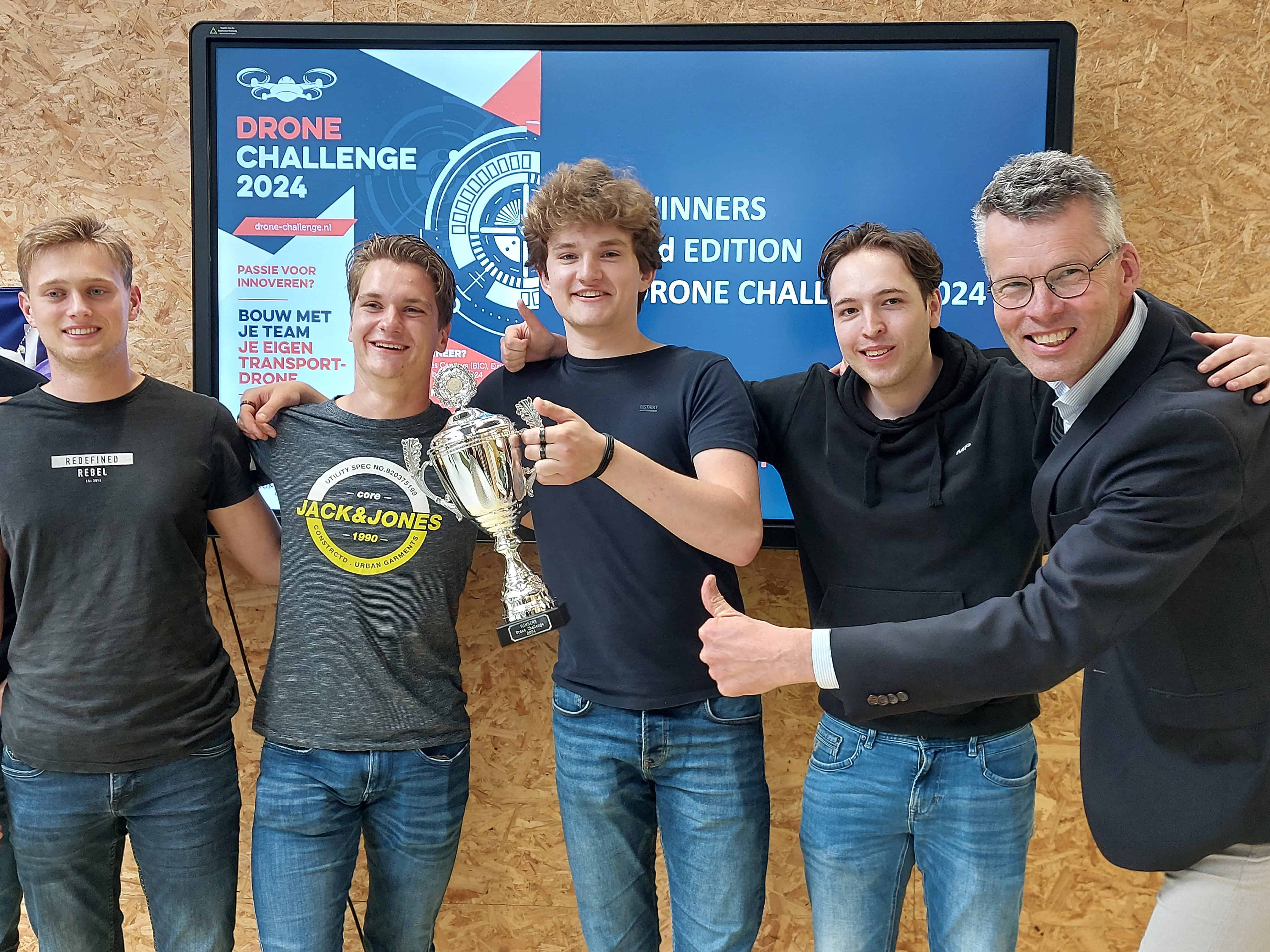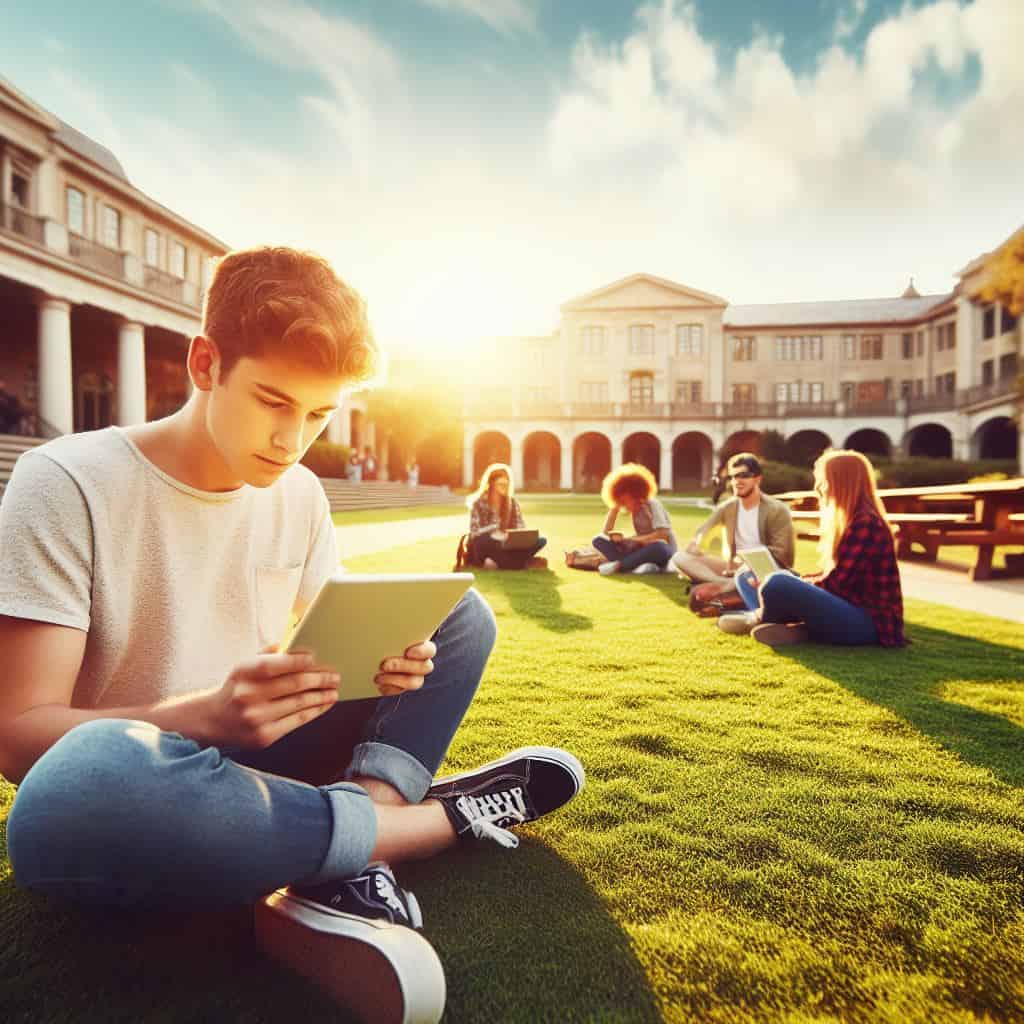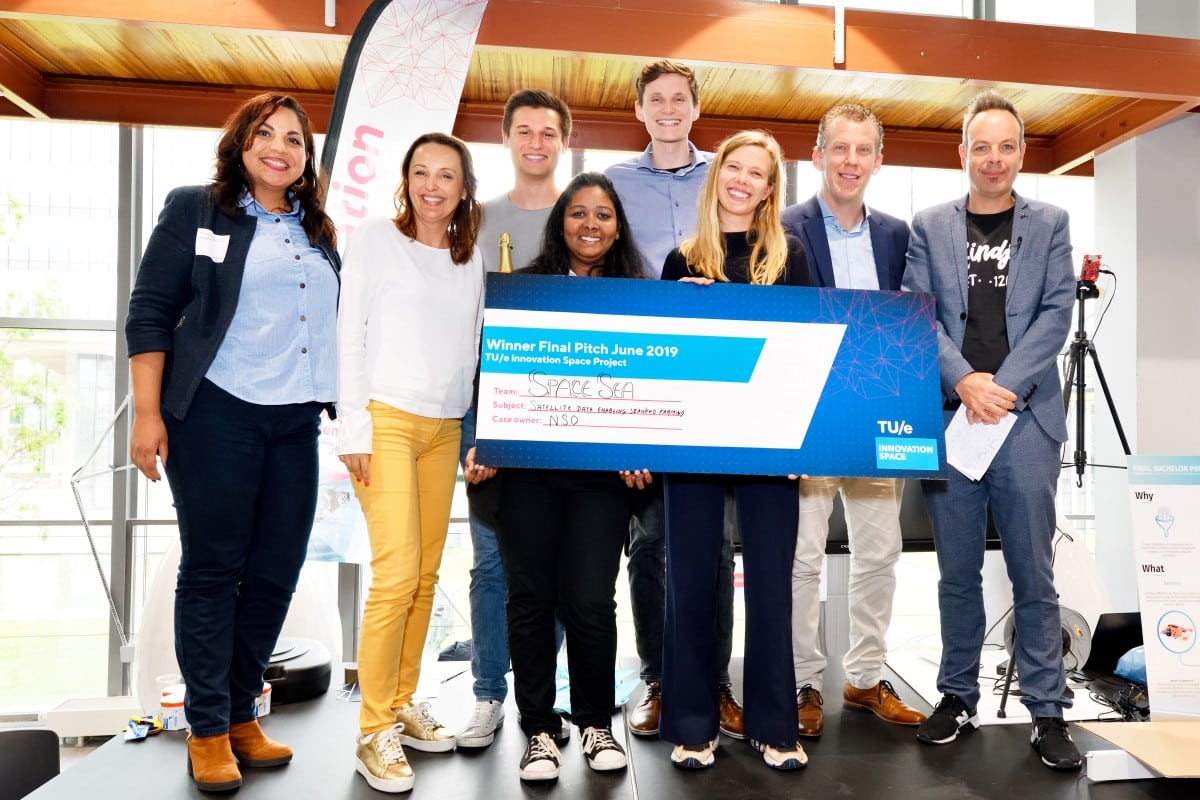
“We train the engineers of the future.” With this statement, Isabelle Reymen, director of TU/e innovation Space, unveiled the final student presentations from the education programs at TU/e innovation Space. Masters and bachelor students had all worked on challenges from various companies. Seventeen ingenious solutions to practical and familiar problems were published on Thursday morning.
“Here we teach students other skills than in regular education,” says Reymen. “We focus on challenge-based learning. Entrepreneurship and interdisciplinary teams are key.” Six months ago, eight groups of masters students were given problems which companies or researchers were struggling with. It was up to the students to find a solution for these. This resulted in a wide range of products and systems. From a new journalism platform, an app for royalty-free video music, to a device that keeps the office quiet.
New perspectives
Kati Brock introduced a project involving DAF. The students with whom she worked came up with a way to reduce the CO2 emissions from trucks. They did this by altering the route according to the wind direction. Driving against the wind costs more fuel. “I thought it was very interesting,” says Brock. Although the project had a slightly difficult start. “The students asked what we wanted so that they could deliver it. We actually didn’t want to give the students an assignment, but rather let them develop their own ideas and perspectives. They really picked this up later on.”
According to Brock, a different take on the changing market around the automobile industry is very important. “Students had much more time to really understand the market and to find particular niches. They looked at it, taking their own backgrounds and know-how into account, and came up with a solution.” As Brock maintains, that is what makes this project very valuable to the company. “We are also dealing with this issue. As a result, we now know more about what resources we can use and which direction we are able to go in.” Brock says DAF is not about to take over the students’ idea. “That wouldn’t be fair. They now have to think more like entrepreneurs and see how they can sell their product. We can be advisers or partners,” she explains. “Furthermore, we are going to utilize what they have researched as support for our decisions.”
Prototype
Alongside the masters students’ projects, several students presented their Bachelor Final Project. They too researched a practical challenge for a company within an interdisciplinary team. In most cases, this resulted in a prototype of a potential solution to a problem. For example, a group of students tried to get people who were waiting for a lift to interact more with each other with the help of virtual reality. Others thought of a way to make the city safer by using audio recordings which were connected to the police and the city council.
Learning objectives
“The students are free to choose which challenge they want to take. But the project must fit in with who they are and what their competencies and learning objectives are”, lecturer and co-founder of TU/e innovation Space Miguel Bruns explains. “In doing so, they also need to look closely at what they themselves can contribute to a team.” The cooperation in interdisciplinary teams is very important according to Bruns. “To do this, students may have to sacrifice a deeper level in their own field of study. They’ll get a lot back in return. Interdisciplinary collaboration ensures that students look at the entire process in a different way.” This is also reflected in the final presentations. “I think it is important that the students look at a proposal which is not only relevant from the business side of things, but also from a technical angle and from the perspective of consumers,” Bruns explains.
Read more about the launch of TU/e innovation Space.
It is the bigger picture, of which the students’ solution is a part of, that is very important according to the lecturer. “The educational landscape is changing. At a university, knowledge is no longer imparted just in a lecture hall. Students are learning more and more about how to acquire and master knowledge.” The university does this for students by setting open challenges around complex themes such as global warming and the ageing society. “Students need to realize that their solutions can have an impact. They need to know what resources they can use in order to achieve this.”

Making money
What struck me was that in most cases, the Bachelor students came up with an idea with a first prototype. In the majority of cases, the step towards entrepreneurship had not yet been taken. On the other hand, the masters students proposed concrete amounts of money that they would need from investors in order to further develop their idea into a product for the market. In addition, they claimed that they could make a lot of money within a few years, with profits of between 200 and 800 thousand euros per year.
That difference was acknowledged by Industrial Design student Loes Voermans. She had previously participated in the Interdisciplinary Bachelor Final Project and had now participated in the Masters Innovation Space Project. “With the bachelor programme, it is more about making prototypes. While the commercial aspect also plays a major role in the masters programme. With both projects, the interdisciplinary team which you work in is very important,” she says. Voermans pointed out that in this project, she has learnt very different skills than at the faculty. “When we started, I was on one side of the spectrum. Someone I worked with was all the way on the other side. In the end, you have to set up a project together. That worked too and even produced surprising results.” Together with a data scientist, a computer scientist and an innovation manager, Voermans developed a platform for citizen participation.
Feasibility
After all the presentations, a professional jury chose the best Bachelor Final Project and the best Master Innovation Space Project. In doing so, they paid attention to various aspects, such as the prototypes which had been made and the feasibility of developing the idea further into a product for the market. When it came to the Master Innovation Space Project, Space Sea was honored with the best idea. For the Bachelor final project, this was 3 Vacuate. Good grades, gained credits and new insights for companies are each a welcome bonus. The most important thing, according to the participating parties, is that connections have been made. Among students themselves, and between students, researchers and companies. Voermans: “TU/e innovation Space is a very strong community, that’s what makes it so special.”





